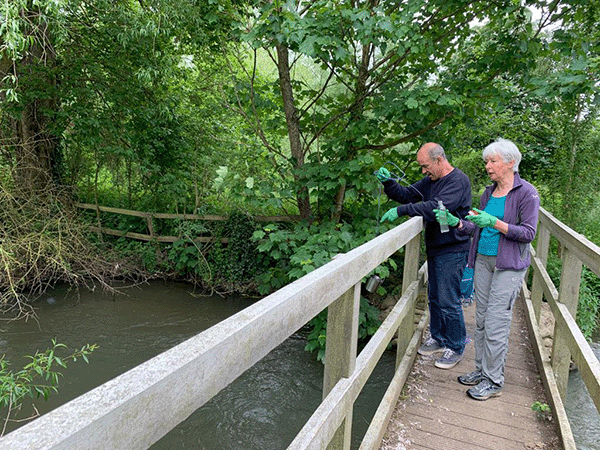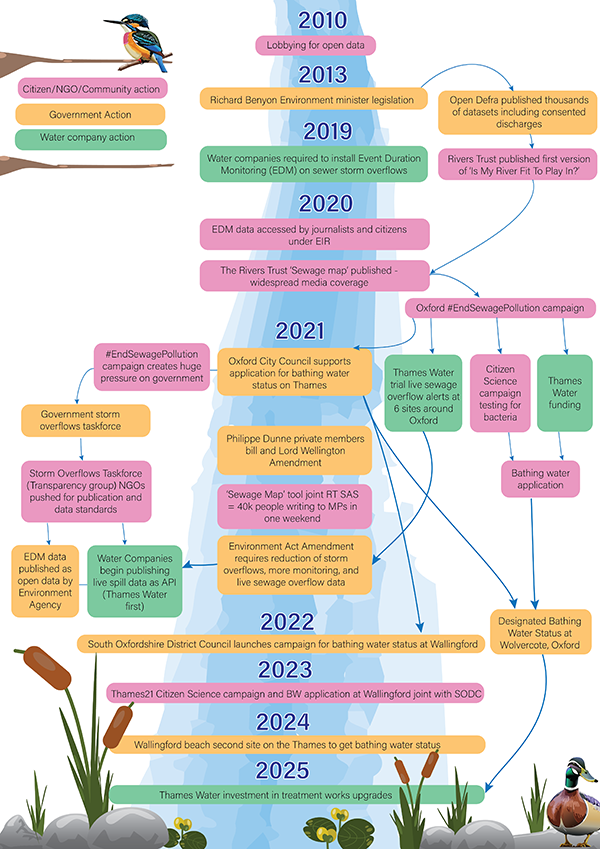Data makes a difference

Citizen science is the involvement of volunteers (non-professional scientists) in science. It enables thousands of ordinary people to become actively involved in research, by either collecting or analysing data.
There are many benefits to citizen science:
- It can generate huge datasets, leading to discoveries which just aren't possible with smaller, professional research teams.
- It engages people with science and the issues the research is aiming to solve.
- It provides extra benefits, such as teaching participants new skills and creating new social networks.
- It can bring the scientific community and regulators closer to the general public.
Citizen science schemes and approaches have grown dramatically in the last decade. There are now citizen science projects for almost everything you could imagine, from spotting clouds on Mars to counting wildflowers in your back garden.
In some countries, citizen science is given equal weight to data collected by 'professional' bodies to manage and protect rivers, streams and lakes.
For example, DataStream is a platform which combines freshwater quality data collected by governmental organisations, indigenous groups, industry, community groups and academics across Canada. It currently contains over 43 million observations from over 270 different groups!
Chesapeake Bay is the largest estuary in the USA: with over 150 tributaries, its drainage basin covers six different states. The Chesapeake Monitoring Co-operative co-ordinates the river citizen science efforts in these states, reviewing and certifying their methods so that the government, regulators and academics can confidently use citizen science data.
We would like to see something similar happen in the UK, so the Environment Agency, Ofwat and water companies consider citizen science data when making decisions about rivers.
The Catchment Systems Thinking Co-operative (CaSTCo) project aims to do just this, bringing together over 24 different partners, from universities to water companies to community groups, to focus on citizen science in rivers. CaSTCo is an active project, so check back for more updates.
Open data is data that anyone can access, use and share, without any restrictions.
Opening up (non-personal) data has many benefits, from improving the economy, to supporting research and innovations, to increasing the transparency of governments and companies.
In the UK, the Environmental Information Regulations (2004) give people the right to access information held by public authorities which relate to or affect the environment. This includes relevant data held by the private sector, including water companies.
As well as having to provide environmental information on request, these public authorities (including water companies) have a duty to progressively make the information available to the public by electronic means which are easily accessible.
The Oxford Rivers Portal is all open data. We have collated data which is under an open license, and is integrated into the portal via APIs (what is an API?).
We aim to ensure the portal adheres to 'FAIR data' principles, which make data easy to find, access, integrate and reuse. We will publish case studies to show how data in the portal can be explored and used to investigate different issues.
Sometimes people criticise river organisations for their focus on citizen science and data gathering. We know what the problem is, we don't need more investigations, we need action is the broad argument.
However, experience and research has shown that citizen science has wide-reaching and sometimes unexpected impacts.
Here are six ways citizen science has been shown to make a difference:
Environmental management
By sharing data with institutions, like regulators and water companies, citizen science can help inform the way those institutions manage the environment.
Evidence for policy
Evidence which emerges from citizen science initiatives can lead to and support shifts in institutional and collective policy.
Community action
Citizen science projects bring participants together to effect direct environmental action, such as litter picks or river restoration. The citizen science can help inform this action.
Social network championing
Participants influence friends, neighbours, and colleagues to encourage them to change their behaviour.
Political advocacy
Individuals and communities involved in citizen science have been inspired to publicly support causes and advocate for change. Such pressure can push issues up the political agenda and can lead to more rapid change than through academic research alone.
Behaviour change
Taking part in a citizen science project can inspire participants to engage in environmentally positive behaviours beyond the citizen science project itself.

- This diagram shows some of the ways citizen science and open data have made a change to rivers in the Oxford area and beyond in the past few years.
- Download an image of the data to action timeline
Pocock, M J O, Chapman, D S, Sheppard, L J & Roy, H E. 2014. Choosing and Using Citizen Science: a guide to when and how to use citizen science to monitor biodiversity and the environment. Centre for Ecology & Hydrology. Accessed on 10/06/2024.
van Noordwijk, T, et al. 2021. Creating Positive Environmental Impact Through Citizen Science. In: Vohland, K, et al. The Science of Citizen Science. Springer, Cham.
Environment and Climate Change Canada. 2023. About the Canadian Aquatic Biodiversity Monitoring Network (CABIN). Accessed on 11/06/2024.
The Open Data Institute (2016). Blog: What is open data? Accessed on 11/06/2024.
Information Commissioner's Office (2023). What are the Environmental Information Regulations? Accessed on 11/06/2024.